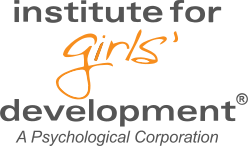Celebrating Diversity: Six Steps You Can Take to Do Your Own Work
Melissa J. Johnson, PhD
As we consider ways to help children understand race and appreciate diversity, its vital for us to “do our own work.” Research has indicated that many white parents, in an effort to help children be inclusive, may avoid discussions of race and difference. However, current research also shows that the common notion of “color blindness” does not help children appreciate diversity or stand up for inclusion and against discrimination. In this issue we address tools for all families for talking about race and diversity, considering white privilege, and online resources for communities of color. Let’s start with tools for family conversations: What are steps we can take to do our own work?
- Recognize your own discomfort: Parents often avoid uncomfortable topics – racism, white privilege, underage drinking, sexual behavior. Give yourself permission to have these conversations – even if they are uncomfortable. Work on getting comfortable with being uncomfortable. Role-play conversations. Practice techniques to breathe through – and stay calm – during difficult conversations.
- Recognize what is developmentally appropriate for your child: and don’t get ahead of yourself or them. Younger children are interested in difference – they are curious and notice difference in all kinds of things. This can be a great time in life to notice, non-judgmentally, differences in skin tone, for example. With older elementary school and middle school-aged children, fairness is an important theme. Take advantage of this interest in your conversations about discrimination. With this age and with teens, there is the capacity to observe what we call “within group differences.” Noticing the range of diversity within all groups is a great – and often mind-expanding – exercise.
- Respond (don’t react) to statements that children make that may seem inappropriate or embarrassing: Children are curious and can offer up inquisitive statements or questions to which we respond internally with “oh no, they didn’t really say that – out loud – in public!” Take a deep breath. Respond, non-judgmentally, with a matter-of-fact educational comment. It is after all a teachable moment when your child says, “why is that person’s skin dirty?” And you respond, calmly, with “actually, their skin isn’t dirty. It’s a different color. People have all different shades of skin.”
- Pay attention to your own struggles, messages and stereotypes: If you notice yourself stating a stereotype or identifying someone by their appearance, you can make a self- correction. Out loud. You can also make these out loud observations when you notice the impact of white privilege. Sometimes, with kids, starting with the word “oops” is helpful. “Oops, I just said something that isn’t really true. I think a better way to say this is ______.” Or, with older kids, “Oops, that sure is a stereotype. Let me change what I just said.” It’s important role modeling – and indicates to your child that we are all learning together and for a lifetime.
- Expand diversity in your own life and in your child’s: Friendship is an important mechanism for learning to live in a diverse world. Provide opportunities for your children to expand their friendship circles to be more culturally diverse. Find ways to attend cultural events – celebrating your own culture as well as the cultures of others. If you have to leave your neighborhood to accomplish this, this is something to discuss as well. Discuss differences and similarities.
- Set the stage for being the “ask-able parent”: Be open and curious when your children make comments and raise questions about race, diversity or white privilege. If you don’t know the answer (and sometimes we don’t), figure out how you can work together to find an answer – or multiple answers.


